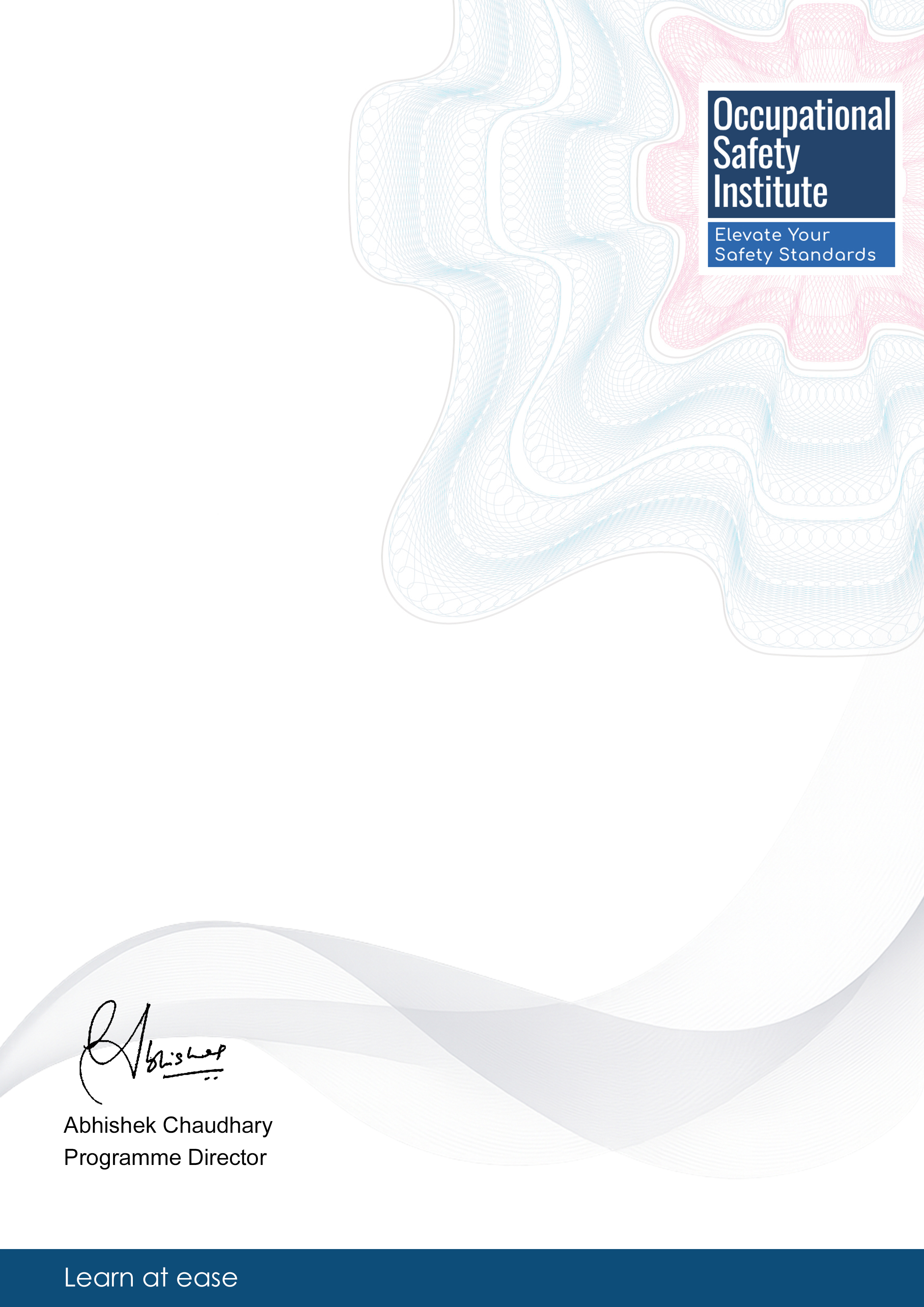Module 1: Introduction to Generative AI in Hazard Identification
This module provides an overview of Generative AI applications in hazard identification and introduces key concepts and techniques.
This course delves into utilizing Generative AI for hazard identification and control in machine learning, catering to professionals seeking advanced AI safety skills. Participants will learn cutting-edge techniques to ensure safe AI applications, setting them apart in the industry and opening new career opportunities.
4.6/5
|154 reviews
|753 students enrolled
Comprehensive, industry-recognized certification that enhances your professional credentials
Self-paced online learning with 24/7 access to course materials for maximum flexibility
Practical knowledge and skills that can be immediately applied in your workplace
This module provides an overview of Generative AI applications in hazard identification and introduces key concepts and techniques.
Explore various control measures and strategies to mitigate risks associated with AI applications in safety-critical environments.
Analyze real-world scenarios and case studies to understand how Generative AI can be used for effective hazard identification and control.
Learn how to integrate AI safety practices into existing organizational frameworks and enhance overall safety culture.
This programme includes comprehensive study materials designed to support your learning journey and offers maximum flexibility, allowing you to study at your own pace and at a time that suits you best.
You will have access to online podcasts with expert audio commentary.
In addition, you'll benefit from student support via automatic live chat.
Assessments for the programme are conducted online through multiple-choice questions that are carefully designed to evaluate your understanding of the course content.
These assessments are time-bound, encouraging learners to think critically and manage their time effectively while demonstrating their knowledge in a structured and efficient manner.
The field of AI safety and machine learning offers diverse career prospects with growing demand for professionals skilled in AI-driven hazard identification and control.
Professionals in this field can progress to roles such as AI Safety Engineer, Machine Learning Safety Specialist, and AI Risk Analyst. There are ample opportunities for further education and industry recognition.
AI Safety Engineers design and implement safety protocols for AI systems to prevent hazards and ensure ethical AI practices.
Machine Learning Safety Specialists focus on identifying and addressing risks in machine learning models to ensure safe and reliable AI applications.
AI Risk Analysts assess and manage risks associated with AI technologies, providing insights to enhance safety measures in AI projects.
Professionals in AI safety and machine learning can benefit from networking opportunities, obtaining relevant professional certifications, pursuing further education paths, and gaining industry recognition for their expertise.
Data Security Analyst
"I learned how to effectively apply Generative AI to identify potential hazards in machine learning models, enhancing our data security protocols."
AI Systems Engineer
"Implementing control measures taught in this course has revolutionized how we mitigate AI-related risks in our systems, ensuring optimal performance."
Machine Learning Researcher
"The course equipped me with the skills to analyze real-world scenarios using AI, enabling me to identify and address potential hazards proactively."
AI Safety Consultant
"I developed robust strategies for integrating AI safety practices into existing frameworks, elevating the safety standards for our clients' AI applications."
Upon successful completion of this course, you will receive a certificate similar to the one shown below:

Professional Certificate Utilizing Generative AI for Hazard Identification and Control in Machine Learning
is awarded to
Student Name
Awarded: December 2025
Blockchain ID: 111111111111-eeeeee-2ddddddd-00000
No specific prior qualifications are required. However, basic literacy and numeracy skills are essential for successful completion of the course.
The course is self-paced and flexible. Most learners complete it within 1 to 2 months by dedicating 4 to 6 hours per week.
This course is not accredited by a recognised awarding body and is not regulated by an official institution. It is designed for personal and professional development and is not intended to replace or serve as an equivalent to a formal degree or diploma.
This fully online programme includes comprehensive study materials and a range of support options to enhance your learning experience: - Online quizzes (multiple choice questions) - Audio podcasts (expert commentary) - Live student support via chat The course offers maximum flexibility, allowing you to study at your own pace, on your own schedule.
Yes, the course is delivered entirely online with 24/7 access to learning materials. You can study at your convenience from any device with an internet connection.
Machine Learning Models for Incident Prevention in Health and Safety
This course focuses on leveraging Machine Learning Models f…
Practical Machinery and Equipment Safety Implementation Training
This course focuses on practical implementation of machiner…
Data Science Hazard Identification and Control
This course focuses on equipping professionals in AI-genera…
Managing Occupational Health Hazards in Foreign Direct Investment Projects
This course equips professionals involved in foreign direct…
Disclaimer: This certificate is not intended to replace or serve as an equivalent to obtaining a formal degree or diploma. This programme is structured for professional enrichment and is offered independently of any formal accreditation framework.